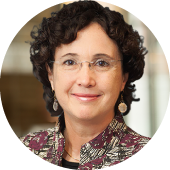When I attended the 2022 STAT Breakthrough Science Summit in New York City last month, I participated in a panel discussion with fellow gene editingAlso called genome editing. Gene editing collectively refers to a set of technologies, including CRISPR/Cas9, which can be used to cut and modify DNA. Gene editing uses systems to make the DNA change inside the cell. These cells can be edited in the body (in vivo) or outside the body (ex vivo) from a patient or donor. colleagues. What struck me is how far CRISPRAdapted from a naturally occurring bacterial immune system, CRISPR is an acronym for Clustered Regularly Interspaced Short Palindromic Repeats. One of the proteins in the CRISPR system is known as CRISPR-associated 9 protein or Cas9 protein, which cleaves the DNA. Researchers have co-opted the bacterial CRISPR system to make specific changes in the DNA of humans, other animals and plants. CRISPR was first harnessed in 2012 as a genome editing tool in the lab. More recently, scientists have begun engineering and testing CRISPR systems to be very specific to a desired genetic target. has come and how relentless we’ve been in applying this investigationalIn a research or clinical setting, investigational means that the drug has not been approved or authorized for use in patients outside of a clinical trial by any authority that regulates new treatments, such as the U.S. Food and Drug Administration (FDA) or United Kingdom Medicines and Healthcare products Regulatory Agency (MHRA). technology to potentially future life-saving medicines. It also was a wonderful opportunity to underscore the value and importance of a deep and broad toolbox, an essential element of the full-spectrum approach here at Intellia.
There’s not a single gene editing modality that’s going to be able to address all genetic diseases. That also means there’s not a single delivery modality that will do the same.
Being full spectrum not only refers to using the technology for in vivo and ex vivo therapeutic applications. It also encompasses our mission to create a toolbox of technology enablers and solutions — from various gene editing and delivery modalities to development capabilities. With this approach, we have the ability to mix and match the best tools applicable for a specific disease or application. There’s not a single gene editing modality that’s going to be able to address all genetic diseases. That also means there’s not a single delivery modality that will do the same.
I like to think of it as the tools we have in our kitchen. We have the usual forks, spoons and knives. But we can’t, for instance, flip an egg with a spoon. We would most likely use a spatula, right? Ultimately, what we want is the ability to use the best tool for any of the genetic mutations that cause disease.
In addition to the importance of our editing tools, we must also be able to deliver our gene editing tools to the nucleus of the right cell type in the target organ, at the right dose. We are leveraging our capabilities for non-viral delivery using lipid nanoparticles, as well as adeno associated viruses (AAV).
We’ve shown proof of concept for gene editing in humans with NTLA-2001 and continue to push forward with other programs. I am incredibly excited and honored to be a part of the journey.


